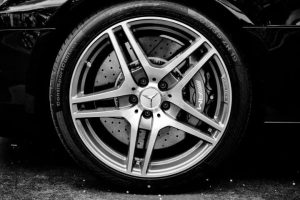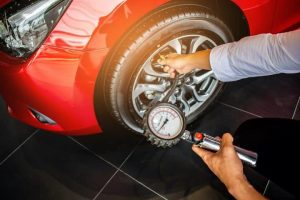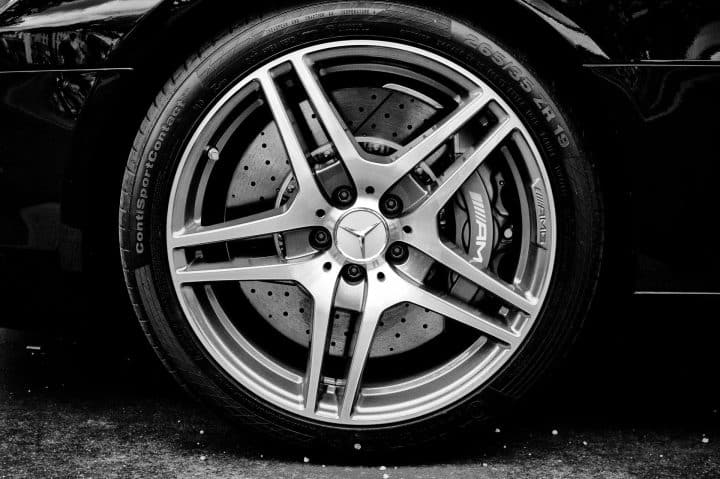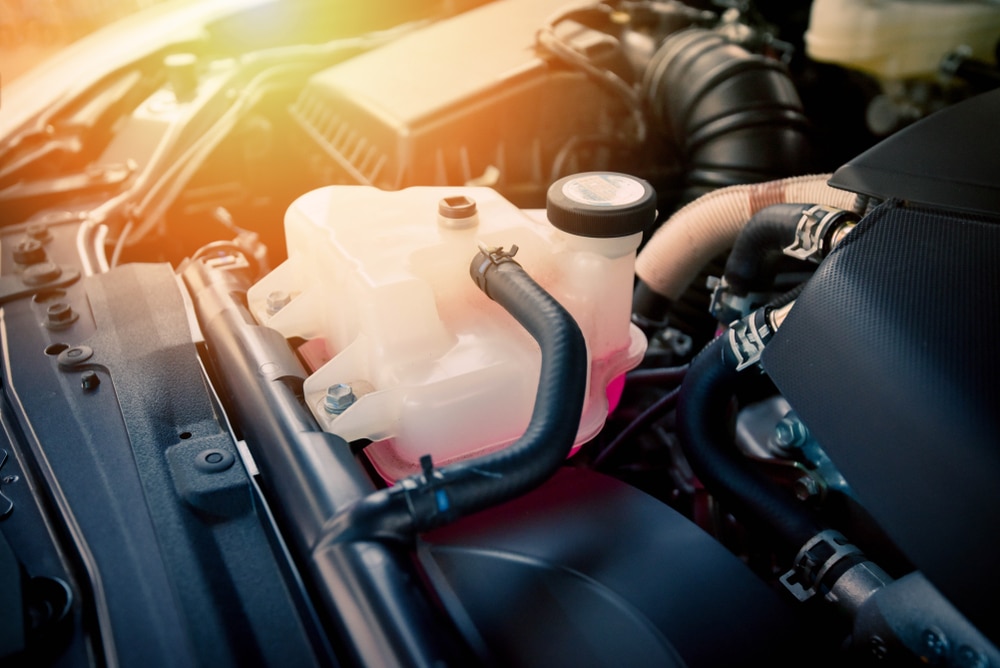Mercedes-Benz Tyre Pressure
Keeping your tyre pressure at the right level is an easy part of car maintenance. In spite of this, it is often overlooked. You may be asking yourself, what is the correct tyre pressure for my Mercedes? When inspecting and maintaining my tyres, what else should I look for? In this article, we’ll answer these questions and more.

How Can Under-Inflated Tyres Affect My Mercedes-Benz
If you drive a Mercedes-Benz with under-inflated tyres, the tyres will wear out quicker, reducing their durability and posing an increased risk of a sudden puncture. This can also result in increased fuel consumption due to increased roll resistance – the force that resists the movement of a vehicle’s tyres as they roll on the road. Moreover, leaving tyres underinflated by 30% can increase the risk of hydroplaning, which can be dangerous on wet roads.
Improperly inflated tyres can also lead to uneven tread wear on your Mercedes-Benz’s tyres, which will affect handling and decrease traction. The tyres may be less responsive to road hazards as a result of this damage, which can make driving less enjoyable. Make sure your tyres are properly inflated to keep your Mercedes running smoothly.
Visit DCM Autocentre if you need help checking and topping up your Mercedes tyre pressure. Our expert technicians are proud to serve Mercedes-Benz owners in Blandford Forum & Shaftesbury, and surrounding areas.
Recommended Tyre Pressures for Your Mercedes Benz
When you own a Mercedes vehicle, you should be sure you’re using the correct tyre pressure for your make and model. In some cases, manufacturers recommend different pressure levels for winter tyres.
Most Mercedes models have higher tyre pressures at the front than at the rear to balance the weight distribution and compensate for the extra weight of the engine and transmission, particularly on front-wheel-drive models.
If you are unsure of what tyre pressure your Mercedes needs, check its maintenance guide or the sticker on the inside of the driver’s door or fuel cap. Don’t hesitate to contact DCM Autocentre, your local Mercedes specialist, for expert advice and assistance should you need help with your tyre pressure.

Checking Your Mercedes Benz’s Tyres and the Essential Tools You Will Need
In modern vehicles, the Mercedes-Benz Tyre Pressure Monitoring System (TPMS) is an advanced tool that will alert you when your tyre pressure is low. With your instrument cluster on the dashboard, you can even check the pressure of each tyre.
The tyre pressure can be checked by turning on your Mercedes-Benz, accessing the “Service” menu using the arrow keys on your steering wheel, selecting “Tyre Pressure” using the up and down arrow keys and pressing “OK” to see the tyre pressure for each tyre.
If your vehicle does not have this feature, or if you prefer the traditional way of measuring tyre pressures, then you will need a pressure gauge. Pressure gauges can be found in most petrol stations or you can buy one for use at home.
The first step to using a pressure gauge is to remove the valve cap from the tyre you wish to inspect. The pressure gauge should be placed on the valve stem and pressed firmly until a reading is obtained.
Compare the reading with the recommended pressure in your Mercedes vehicle’s owner manual or on the sticker inside the driver’s door. If the pressure is lower than recommended, add air until you reach the right pressure. Release some air if the reading is too high.
When measuring tyre pressures, there are many mistakes that can be made, such as using an inaccurate gauge or measuring when the tyres are too hot or cold. When in doubt, seek expert advice from a Mercedes specialist garage like DCM Autocentre to ensure your vehicle’s tyres are properly inflated.

How Reliable Is Your Mercedes Benz’s Tyre Pressure Monitoring System?
In general, the Mercedes-Benz Tyre Pressure Monitoring System (TPMS) can give you an accurate reading of your tyre pressure. However, the TPMS needs to be calibrated and functioning properly. We can calibrate your TPMS for you at DCM Autocentre.
Here at DCM Autocentre, we specialise in servicing and maintaining Mercedes-Benz vehicles. Our team can check your tyre pressure monitor system and get your pressures to the recommended level quickly to minimise any inconvenience and keep you active on the road.
Adjusting Tyre Pressure Based on Weather and Road Conditions: Everything You Need to Know
Temperature and weather changes can affect tyre pressure. Cooler weather decreases tyre pressure, while warmer weather increases it. Tyre pressure is measured in pounds per square inch (PSI) or Bar. As mentioned previously, you can generally find the recommended tyre pressure on a sticker or plate inside your car door or inside your owner’s manual.
Over the course of the day, tyre pressure can change as tyres are used. Low pressure can increase fuel consumption and cause heat build-up in the rubber, reducing tyre longevity. During high speeds on rough, dry roads in the sun, pressure can increase by up to 10 PSI. You should check your tyre pressure every month to reduce the effects of temperature changes. Do not hesitate to contact DCM Autocentre if you are unsure about the condition or pressure of your tyres.
Seven Ways to Maintain Your Mercedes Benz Tyres and Extend Their Lifespan
Maintaining the tyres on your Mercedes-Benz is essential to ensuring a comfortable and safe driving experience. At DCM Autocentre, we specialise in Mercedes-Benz vehicles and can help you with your tyre maintenance needs.
To keep your tyres in good condition, follow these tips:
- Check the condition of your tyres: Make sure your tyres are safe by looking for bulges, cuts, or embedded objects that may require a mechanic’s attention. Whenever you notice a puncture while driving, pull over and swap to your spare wheel as soon as possible.
- Check the condition of your tyre tread: There is a legal minimum tread depth of 1.6mm. If your tyre tread falls below this, you can face a fine of up to £2,500 and three points on your license per wheel. If your tyres are approaching or below the legal limit of 1.6mm, you should replace them.
- Use the right tyres: All-weather tyres offer good performance all year round, so these are most commonly used. However, in some European countries with more extreme weather conditions, motorists still need to switch between summer and winter tyres.
- Ensure wheels are aligned: Incorrect wheel alignment can lead to uneven tyre wear. Having uneven tyre wear can result in tyre damage, increased fuel consumption, and affect your control of the vehicle.
- Keep an eye on the maximum load: Overloading your car can cause excessive tyre wear and compromise the handling of the vehicle. In most cases, tyres now have a tyre load index, and it is important not to exceed the load limit.
- Take care with kerbs: One of the biggest causes of tyre damage is bumping into kerbs or mounting them without due care. Whenever you park on the roadside, you should slow down and manoeuvre carefully so that you don’t knock the kerb with your tyres.
- Practice good driving habits: Whenever possible, avoid heavy braking, accelerate gradually, make transitions smoother, avoid bumps, potholes, and road undulations, and slow down for speed bumps.
You can get your Mercedes-Benz tyres checked at DCM Autocentre if you are not confident in checking them yourself. We’re just a call away. Contact our helpful reception team today!



